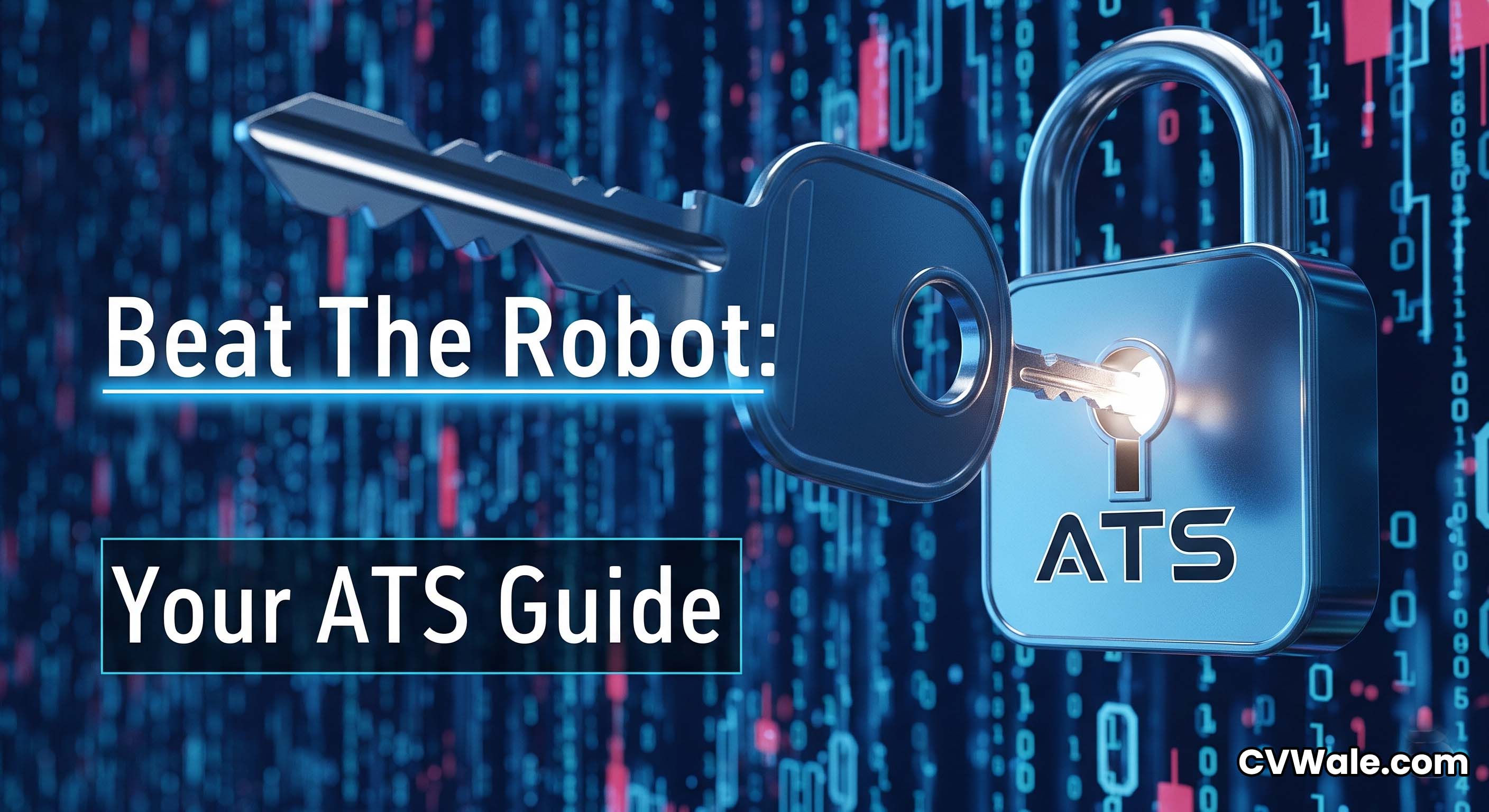How to Customize Your CV for Any Job (A Complete ATS Guide for 2025)

Have you ever spent hours applying for jobs online, sending out dozens of applications, only to be met with complete silence? It's a frustrating experience common to many job seekers. Often, the problem isn't your qualifications; it's your application strategy. Sending the same generic CV to every employer is one of the biggest mistakes you can make. In 2025, job applications are a game of precision, not just volume. Most large and mid-sized companies now use Applicant Tracking Systems (ATS) to manage the flood of applications. These are robotic gatekeepers, and if your CV isn't tailored to their specific requirements, it will never reach a human recruiter. This guide will teach you the art of tailoring your CV for any job, providing a step-by-step process to optimize your resume, beat the ATS, and significantly increase your chances of landing an interview.
First, What is an Applicant Tracking System (ATS)?
An Applicant Tracking System (ATS) is a software application that automates the recruitment process. When you apply for a job online, your CV is first received by an ATS, not a person. The software then scans your document for specific keywords, skills, job titles, and qualifications that match the requirements listed in the job description. It then scores and ranks all the applications. Only the top-scoring candidates' CVs are passed on to a human hiring manager for review. It's estimated that over 90% of large companies in India use some form of ATS. Therefore, if your CV is not "ATS-friendly," you're essentially invisible to the majority of employers.
The Step-by-Step Guide to Tailoring Your CV
Tailoring your CV for each application might seem like a lot of work, but with a systematic approach, it becomes a quick and highly effective habit.
Step 1: Become a Detective - Deconstruct the Job Description
The job description is your treasure map. Before you even think about your CV, you need to analyze the job posting in detail. Read it multiple times and pull out the following key pieces of information:
- Job Title: Note the exact title they use (e.g., "Senior Software Engineer" vs. "Lead Developer").
- Key Responsibilities: What are the main duties of the role? List them out.
- Must-Have Skills (Hard Skills): Look for specific technologies, software, languages, or certifications mentioned (e.g., "Proficiency in Python and SQL," "Experience with Adobe Creative Suite").
- Important Qualities (Soft Skills): Look for descriptive words like "team player," "strong communication skills," "problem-solver," "fast-paced environment."
Create a checklist with these keywords. This is your guide for customization.

Step 2: Mirror the Keywords in Your CV
Now, take the checklist of keywords you created and strategically insert them throughout your CV. The goal is to use the employer's own language. If they say "Project Management," use that exact phrase instead of "Led Projects." Place these keywords in your Professional Summary, Skills section, and Work Experience descriptions. However, do this naturally—don't just stuff keywords where they don't belong.
Step 3: Customize Your Professional Summary
Your summary should be rewritten for every single job. It needs to reflect the top 2-3 requirements from the job description immediately.
Example for a "Social Media Manager" role that requires "engagement growth" and "video content":
Generic Summary: "A skilled marketing professional with 5 years of experience in social media."
Tailored Summary: "A creative Social Media Manager with 5+ years of experience in building and engaging online communities. Proven expertise in developing viral video content for Instagram and YouTube, leading to a 40% growth in follower engagement."
Step 4: Refine Your Work Experience Bullet Points
This is where tailoring has the most impact. Don't just list what you did; showcase achievements that are relevant to the *new* job. Look at your checklist of responsibilities from the job description and rewrite your past achievements to align with them.
Example: If the new job requires "managing budgets," go back to your old roles and find an achievement related to it.
Before: "Organized a marketing event."
After: "Organized the annual marketing conference for 200+ attendees, successfully managing a budget of ₹5 Lakhs and finishing 10% under budget."
Step 5: Reorder Your Skills Section
Your Skills section should not be a static list. For each application, reorder the skills to prioritize the ones mentioned at the top of the job description. If the job ad emphasizes "Java," then "Java" should be one of the first skills you list. This simple change makes it easier for both the ATS and the human recruiter to see you're a match at a glance.
The Importance of an ATS-Friendly Format
All your tailoring efforts will go to waste if the ATS can't read your CV. To ensure your document is machine-readable, follow these simple formatting rules:
- Use a clean, simple layout. Avoid columns, tables, and text boxes.
- Stick to standard fonts. Use fonts like Poppins, Arial, or Calibri.
- Use standard section headings. Use clear titles like "Work Experience," "Education," and "Skills."
- Save your document as a PDF. A PDF preserves your formatting perfectly across all systems.
Using a professionally designed template from a tool like CVWale is the easiest way to ensure your CV is both visually appealing and ATS-compliant, allowing your carefully tailored content to shine through.
Yes, tailoring your CV for every single application takes more time than the "spray and pray" approach. But it's about working smarter, not harder. A handful of highly tailored applications will always yield better results than a hundred generic ones. Invest the time, and you'll see the interview calls start coming in.
